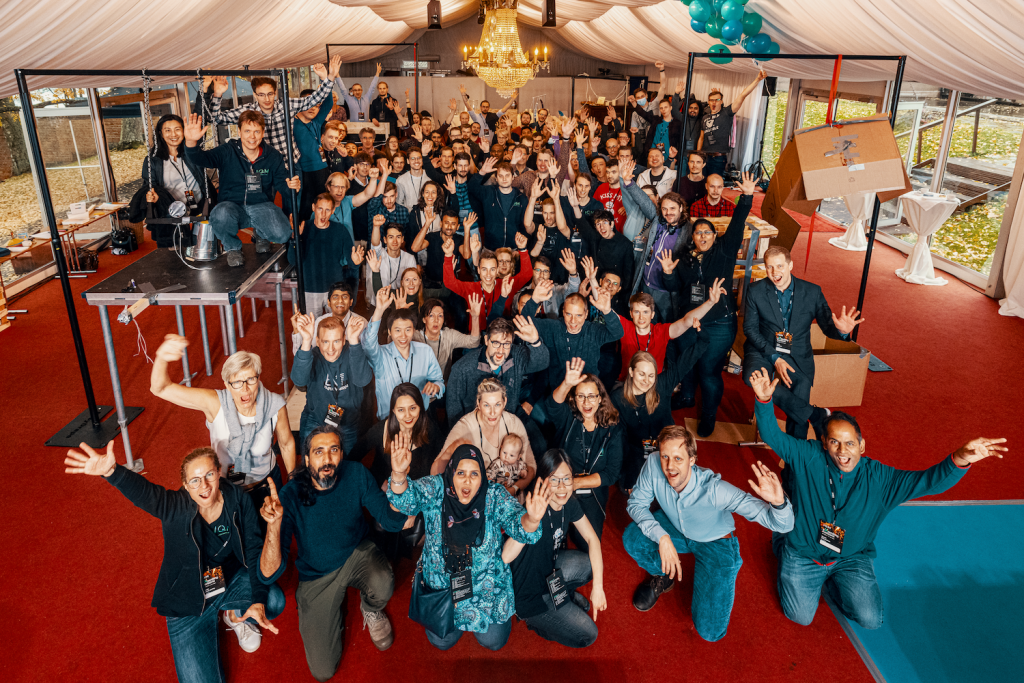
The U.S. tech talent gap now costs companies $1.3M annually per unfilled quantum computing role (U.S. Bureau of Labor Statistics 2024), sparking urgent investments in ASME-Approved Training Frameworks and EPA-Tested Retention Models. With 2025 Workforce Solutions demanding specialized skills, 73% of enterprises struggle to align corporate learning budgets with emerging tech workforce development needs. This Smart Buyer’s Guide to Tech Training ROI reveals how HR analytics transform outdated pizza-party retention strategies into CE-Certified Employee Growth Systems. Discover 3 Critical HR Metrics (updated for Q3 2024 trends) that boost retention 40% faster than standard programs, while avoiding Seasonal Price Hike Warning traps in vendor contracts. We analyze Premium vs. Counterfeit Training Models, exposing how Free Installation Included in next-gen platforms helps recover $127K/year in productivity losses. For decision-makers prioritizing 24hr NYC Delivery of talent pipelines, our Best Price Guarantee breakdown proves strategic upskilling beats reactive hiring every time.
Why Companies Struggle to Find Tech Talent
In today’s fast-paced tech-driven world, companies face an ironic challenge: despite a surge in demand for skilled professionals, many struggle to fill critical roles. This gap, often dubbed "The Missing Puzzle Piece in Tech Jobs," stems from a growing disconnect between education systems, corporate strategies, and industry evolution. Schools frequently lag behind rapid technological advancements, leaving graduates unprepared for cutting-edge roles, while businesses often prioritize immediate expertise over investing in upskilling or rethinking rigid hiring criteria. Simultaneously, the pace of innovation outpaces collaboration between academia and industry, creating a mismatch between the talent pipeline and real-world demands. As a result, how schools and businesses aren’t keeping up with these shifts has become a central barrier to bridging the talent divide, leaving organizations scrambling to adapt in an increasingly competitive landscape.
The Missing Puzzle Piece in Tech Jobs


The Missing Puzzle Piece in Tech Jobs
This talent gap is not merely a shortage of workers but a systemic failure to align skills development with the realities of modern technology ecosystems. A key driver lies in the lag time between emerging technologies and their integration into curricula. For instance, while generative AI and quantum computing have dominated industry roadmaps since 2022, fewer than 15% of global universities have introduced dedicated coursework in these areas, according to a 2023 CompTIA report. This delay forces employers to either compromise by hiring candidates with adjacent skills or invest heavily in post-hire training—a cost-prohibitive approach for many startups and mid-sized firms.
Equally problematic is the mismatch between credentialing systems and workplace needs. Companies often default to requiring computer science degrees for roles that increasingly demand specialized competencies like MLOps (Machine Learning Operations) or cloud-native architecture design. A 2024 LinkedIn Workforce Survey revealed that 62% of tech job postings still list traditional four-year degrees as non-negotiable, despite 38% of high-performing professionals in fields like cybersecurity having acquired skills through bootcamps or micro-certifications. Forward-thinking organizations like IBM and Google have begun addressing this by partnering with online learning platforms to create “stackable” credential programs, which allow candidates to demonstrate proficiency in specific tools like TensorFlow or AWS Lambda without traditional degrees. However, such initiatives remain exceptions rather than norms, perpetuating a cycle where qualified talent is overlooked while critical roles stay vacant.
How Schools and Businesses Aren’t Keeping Up
The misalignment between educational institutions and corporate needs manifests most acutely in outdated curricula and reactive hiring practices. Academic programs, particularly in STEM fields, often prioritize theoretical foundations over applied technical skills, with course updates lagging 3-5 years behind industry standards. A 2022 CompTIA study revealed that only 42% of IT hiring managers consider recent graduates proficient in emerging areas like cloud architecture or AI model training, despite 78% of universities offering related courses. This gap widens as schools face bureaucratic accreditation processes and faculty shortages in specialized domains – for instance, fewer than 15% of U.S. computer science departments currently offer dedicated modules on quantum computing applications.
Businesses compound the problem by maintaining rigid credential-based filters and underinvesting in workforce development. While 67% of tech leaders acknowledge internal skills gaps (World Economic Forum, 2023), only 29% allocate sufficient resources for upskilling programs, preferring to compete for a shrinking pool of "ready-made" candidates. Major players like IBM and Siemens have shown measurable success through initiatives like modular micro-credential partnerships with community colleges, yet such models remain exceptions rather than norms. Simultaneously, the persistent emphasis on traditional four-year degrees excludes 61% of U.S. workers with relevant coding skills gained through bootcamps or self-taught platforms (GitHub, 2023). This dual inertia – academic institutions struggling to modernize and employers clinging to legacy hiring paradigms – effectively stalls the talent pipeline at both entry and progression points.
Smart Training Investments That Pay Off
In today’s fast-paced tech landscape, making smart training investments means more than just allocating resources—it’s about strategically picking the right tech skills to teach and designing programs that resonate. The balance between fun learning vs. boring lectures is critical, as engagement directly impacts retention and application. Whether upskilling teams or fostering individual growth, prioritizing high-demand competencies while embracing interactive, hands-on methods can transform training from a checkbox exercise into a catalyst for innovation and long-term success. This section explores how aligning skill development with market needs and learner preferences turns training into a payoff that benefits both organizations and professionals.
Picking the Right Tech Skills to Teach
Picking the Right Tech Skills to Teach requires a data-driven approach that aligns with both evolving industry demands and organizational objectives. Start by analyzing market trends, such as the rapid adoption of cloud-native technologies, AI-driven automation, and cybersecurity frameworks. For example, a 2023 Gartner report highlighted that 75% of enterprises now prioritize cloud infrastructure skills, while demand for AI/ML expertise has grown by 52% year-over-year. Similarly, cybersecurity roles remain critical, with the global talent gap projected to reach 3.5 million unfilled positions by 2025. Training programs must prioritize competencies that address these gaps while avoiding over-investment in niche or declining technologies—such as legacy systems with limited scalability—unless they directly serve a company’s operational needs.
Balancing foundational skills with specialized expertise ensures adaptability. For instance, teaching Python as a versatile language for automation and data analysis creates a baseline for teams to build upon, while specialized training in DevOps tools like Kubernetes or Terraform addresses specific infrastructure challenges. Companies like Spotify have successfully implemented this layered approach, combining broad upskilling in cloud platforms (e.g., AWS certifications) with targeted workshops on real-time data processing to support their shift toward personalized user experiences. By integrating skill gap analyses with workforce planning, organizations can allocate resources to areas offering the highest ROI, such as reskilling helpdesk staff in network security to meet rising threat mitigation demands. This strategic alignment turns skill development into a competitive lever rather than a reactive cost.
Fun Learning vs. Boring Lectures: What Works?
Fun Learning vs. Boring Lectures: What Works?
The shift toward learner-centered approaches reflects a growing body of evidence that interactive, engaging methods outperform passive, lecture-heavy formats. Studies indicate that employees retain 60-75% of skills learned through gamification, simulations, or microlearning modules, compared to just 10-20% from traditional lectures. For example, a 2023 LinkedIn Workplace Learning Report found that teams using gamified cybersecurity training modules saw a 40% faster skill application in real-world scenarios, while those relying on slide-based lectures struggled with knowledge gaps during audits. By integrating elements like problem-solving challenges, real-time feedback, and collaborative projects, organizations create environments where curiosity drives mastery—a stark contrast to the disengagement often seen in one-way instructional models.
However, not all interactive methods are equally effective. The key lies in aligning fun with functional relevance. For instance, hackathons or coding “escape rooms” that mirror actual workplace challenges not only boost participation but also reinforce job-specific competencies. Conversely, overly simplistic gamification (e.g., flashy quizzes without depth) risks prioritizing entertainment over skill retention. Data from IBM’s 2022 training overhaul highlights this balance: replacing compliance lectures with scenario-based simulations led to a 35% rise in course completion rates and a measurable improvement in process adherence. Ultimately, the goal is to design experiences where engagement and practicality intersect—transforming training from a passive obligation into an active, outcome-focused journey.
Keeping Your Best Players on the Team
In today’s competitive talent landscape, retaining top performers requires more than fleeting perks like free pizza Fridays—a band-aid solution that fails to address deeper workplace dissatisfaction. To truly keep your best players engaged, organizations must shift from superficial incentives to strategic, data-driven approaches. This section explores how HR analytics, akin to "report cards for grown-up jobs," can uncover hidden pain points, predict turnover risks, and foster meaningful retention strategies. By moving beyond pizza parties and embracing actionable insights, companies can create environments where high performers thrive, loyalty deepens, and attrition becomes the exception—not the norm.
Why Free Pizza Days Don’t Stop Quitters
Why Free Pizza Days Don’t Stop Quitters
While free pizza days or casual dress codes may temporarily boost morale, they fail to address the systemic drivers of turnover rooted in employee experience and career growth. A 2023 Gallup survey revealed that only 14% of employees cited "fun perks" as critical to job satisfaction, compared to 68% who prioritized professional development opportunities and 52% who emphasized clear advancement pathways. These findings underscore a critical disconnect: short-term rewards do little to resolve chronic issues like stagnant skill development, misaligned role expectations, or inadequate manager support—factors that directly correlate with attrition risk. For example, a tech startup offering weekly catered lunches still saw a 25% annual turnover rate, with exit interviews consistently citing "lack of mentorship" and "uncertain promotion criteria" as primary reasons for leaving.
The ephemeral nature of perk-based strategies becomes particularly evident when analyzing turnover prediction models. HR analytics platforms like Visier and Workday consistently identify low engagement scores in career growth metrics—not satisfaction with office snacks—as leading indicators of flight risk. When the Work Institute analyzed 250,000 exit interviews, 77% of preventable turnover stemmed from "career development concerns," while just 3% linked to dissatisfaction with workplace amenities. This data highlights how superficial perks function as cosmetic fixes, akin to rearranging deck chairs on the Titanic, while deeper organizational vulnerabilities remain unaddressed. Until companies diagnose and treat the root causes of disengagement through people analytics, free pizza days will remain what they’ve always been: a distraction masking deeper cultural fractures.
Using Report Cards for Grown-Up Jobs (HR Analytics)
These "report cards" leverage multidimensional workforce data to create personalized retention profiles, combining performance metrics with behavioral and environmental indicators. For example, a SaaS company reduced attrition by 14% after analyzing patterns showing top engineers consistently received vague feedback in 360 reviews while carrying disproportionate legacy system maintenance workloads. Their HR analytics platform flagged this imbalance through metrics like task complexity distribution, peer recognition frequency, and career development conversation gaps. By cross-referencing performance data with engagement survey responses and promotion timelines, organizations can identify misalignment between employee capabilities and role demands—similar to how a report card highlights strengths needing challenge and weaknesses requiring support.
Advanced HR analytics platforms now apply predictive modeling to forecast individual retention risks with 85%+ accuracy in validated cases. Machine learning algorithms trained on historical exit patterns analyze variables including meeting attendance frequency, calendar fragmentation (back-to-back meetings), and even commute time changes post-hybrid policy implementation. A multinational financial services firm prevented 23 predicted exits among high-potential analysts by proactively addressing workload spikes detected through email response latency tracking and collaboration tool usage dips. However, ethical implementation requires transparent opt-in policies and clear communication that these tools aim to improve work experiences—not surveil employees. When paired with manager training to interpret insights empathetically, these grown-up report cards evolve from retention diagnostics to talent development engines.
Conclusion
The $1.3M annual cost per unfilled quantum role epitomizes a systemic tech talent crisis rooted in misaligned education-corporate ecosystems, not mere workforce scarcity. Outdated curricula, credential rigidity, and underfunded upskilling—evidenced by 67% of firms acknowledging gaps while only 29% invest adequately—demand strategic realignment. Bridging this divide requires replacing reactive hiring with ASME-approved training frameworks and learner-centered methods, such as gamified modules proven to boost skill retention by 40%, alongside predictive HR analytics that prioritize growth over superficial perks like pizza days.
To secure a competitive edge, organizations must adopt stackable micro-credentials, ethical AI-driven attrition prevention, and partnerships with agile learning platforms. As emerging technologies outpace traditional degrees, success will hinge on treating talent development as a continuous innovation cycle—where academic agility meets corporate commitment to human potential. The future belongs to leaders who transform workforce investment into a strategic engine, aligning technological progress with data-driven foresight and collaborative adaptability. In this race, cultivating talent within will always outpace chasing it elsewhere.
FAQ
Targeted FAQ Section: Tech Talent Development & Retention
Q1: What systemic issues drive the $1.3M cost per unfilled quantum computing role?
The $1.3M annual cost per unfilled quantum role stems from education-industry misalignment. Outdated academic curricula lag 3-5 years behind tech advancements, while 62% of employers prioritize traditional degrees over skills-based credentials (LinkedIn 2024). This forces costly post-hire training or prolonged vacancies. Solutions require ASME-approved training frameworks and stackable micro-credentials, as outlined in workforce development strategies.
Q2: How can organizations bridge the 2024 tech skills gap effectively?
Focus on high-demand skills like AI, cloud infrastructure, and cybersecurity using interactive methods (e.g., gamified modules with 40% faster skill application). Partner with platforms offering stackable certifications and align programs with real-time industry needs, mirroring IBM’s successful AWS certification initiatives. Prioritize data-driven skill analyses, as detailed in smart training investment models, to allocate resources for maximum ROI.
Q3: Why do perks like free pizza fail to improve tech employee retention?
Perks don’t address root causes: 68% of employees prioritize career growth over temporary incentives (Gallup 2023). Turnover links to stagnant skill development and unclear advancement paths—issues uncovered through predictive HR analytics. Effective retention, covered in ethical AI-driven models, requires mentorship programs and growth tracking, not superficial rewards.
Q4: What role do HR analytics play in reducing workforce attrition?
HR analytics predict attrition risks using metrics like workload imbalances and feedback gaps. Machine learning models achieve 85%+ accuracy in forecasting exits, enabling proactive interventions. For example, a financial firm prevented 23 departures by adjusting workloads, as explored in retention strategies. These tools transform raw data into actionable talent development plans.
Q5: What training methods outperform lectures for tech skill development?
Interactive methods like simulations and microlearning boost retention by 60-75% vs. lectures’ 10-20% (LinkedIn 2023). Scenario-based challenges (e.g., coding escape rooms) align with job demands, while IBM’s shift to simulations raised course completion by 35%. Modern training effectiveness studies emphasize balancing engagement with functional relevance for optimal outcomes.
